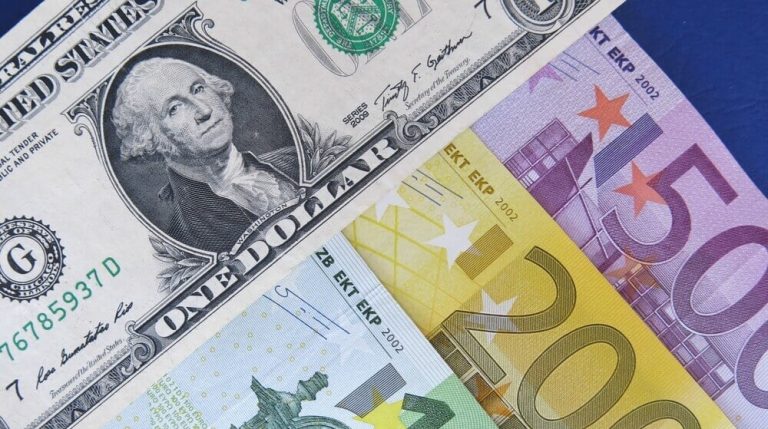- The US dollar stabilized at the beginning of European trading, and showed marginal changes.
- The dollar index was slightly lower at 103.850, and hit a recent low of 103.43.
- The Australian dollar rose, recording a recovery from three-month lows.
In the early European trading session on Friday, the US dollar made a delicate balancing act. Traders are caught between rising risk sentiment fueled by recent corporate earnings and hawkish signals from the Federal Reserve. This juxtaposition has cast a shadow over the prospects of an early cut in US interest rates, leaving financial markets in a state of cautious anticipation.
At the heart of this financial ballet is the dollar index, which fell slightly to 103.850. The dollar index witnessed a significant decline, reaching its lowest level since February 2 at 103.43. Conversely, it reached a peak of 104.97 on February 14. These fluctuations highlight a week that may end with a decline in the dollar. As a result, traders shift their focus towards currencies with cyclical volatility. Moreover, this shift is primarily driven by Nvidia's blockbuster earnings report. As a leader in the artificial intelligence industry, Nvidia has brought a wave of optimism to global investor sentiment.
Fed's various currency reactions: won falls 0.2%
The international currency market reacted in different ways to the US dollar's movements and the Fed's firm stance on interest rates. The South Korean won recorded a slight decline, losing 0.2%, which reflects investors' cautious approach towards emerging market currencies. Conversely, the Singapore dollar remained unchanged, in preparation for the release of crucial inflation data.
The narrative was different for the Australian dollar, which emerged as one of the few winners during the day. It rose by 0.2%, continuing its recovery from its lowest level in three months. This recovery points to the subtle dynamics affecting currency valuations, with regional economic indicators and global sentiment playing important roles.
Looking to the future: the path of the dollar
As the market digests the implications of the recent Fed meeting minutes, which indicate no immediate intention to cut interest rates, the dollar's path remains under close watch. As a result, investors and traders are recalibrating their strategies. It incorporates the central bank's preference to maintain higher interest rates over a long period.
In this context of increased vigilance and strategic reorganization, the task of forecasting currency movements becomes more complex. Moreover, with the global economy at a critical juncture, characterized by technological advances and central bank policies, the dollar's path reflects a broader mix of uncertainties and contingencies in the broader financial environment.

